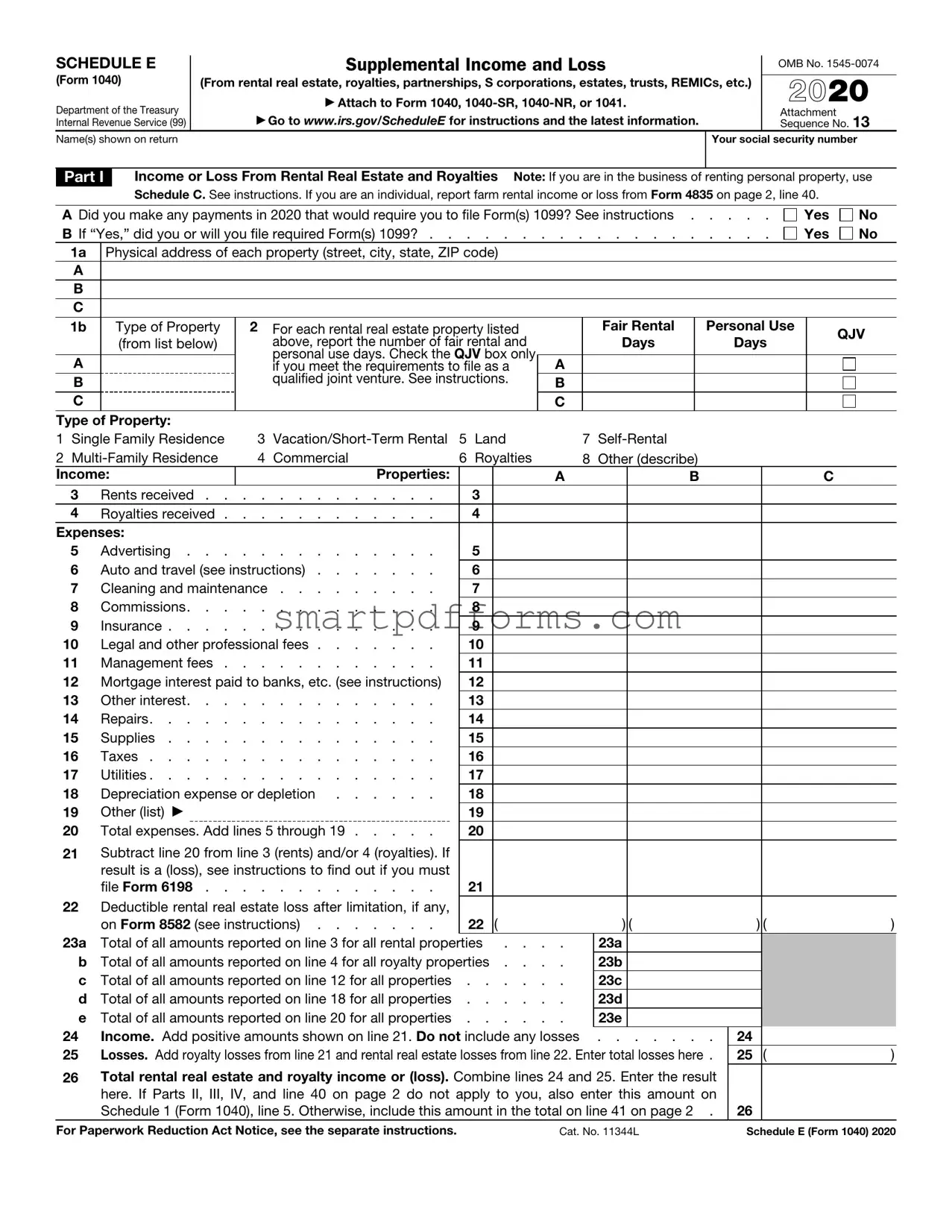Navigating the intricacies of the tax system presents a daunting task for many, particularly when it comes to reporting income from rental properties, royalties, partnerships, S corporations, estates, trusts, and residual interests in REMICs. This is where the IRS Schedule E (Form 1040) becomes pivotal. Designed to accommodate the diverse sources of additional income one might have beyond standard wages, salaries, and tips, the form serves as a critical tool in ensuring taxpayers accurately report earnings and, consequently, are assessed the correct amount of tax. It not only enables individuals to delineate the various streams of supplementary income but also offers a structured way to calculate allowable deductions associated with them, thereby affecting the overall tax liability. The Schedule E's significance is underscored by its role in painting a comprehensive picture of an individual's fiscal footprint, a necessity in the quest to achieve transparency and adherence to tax laws. Given the complexities associated with its fields and schedules, understanding this form's nuances can make a substantial difference in navigating the financial responsibilities that accompany unique income sources.


